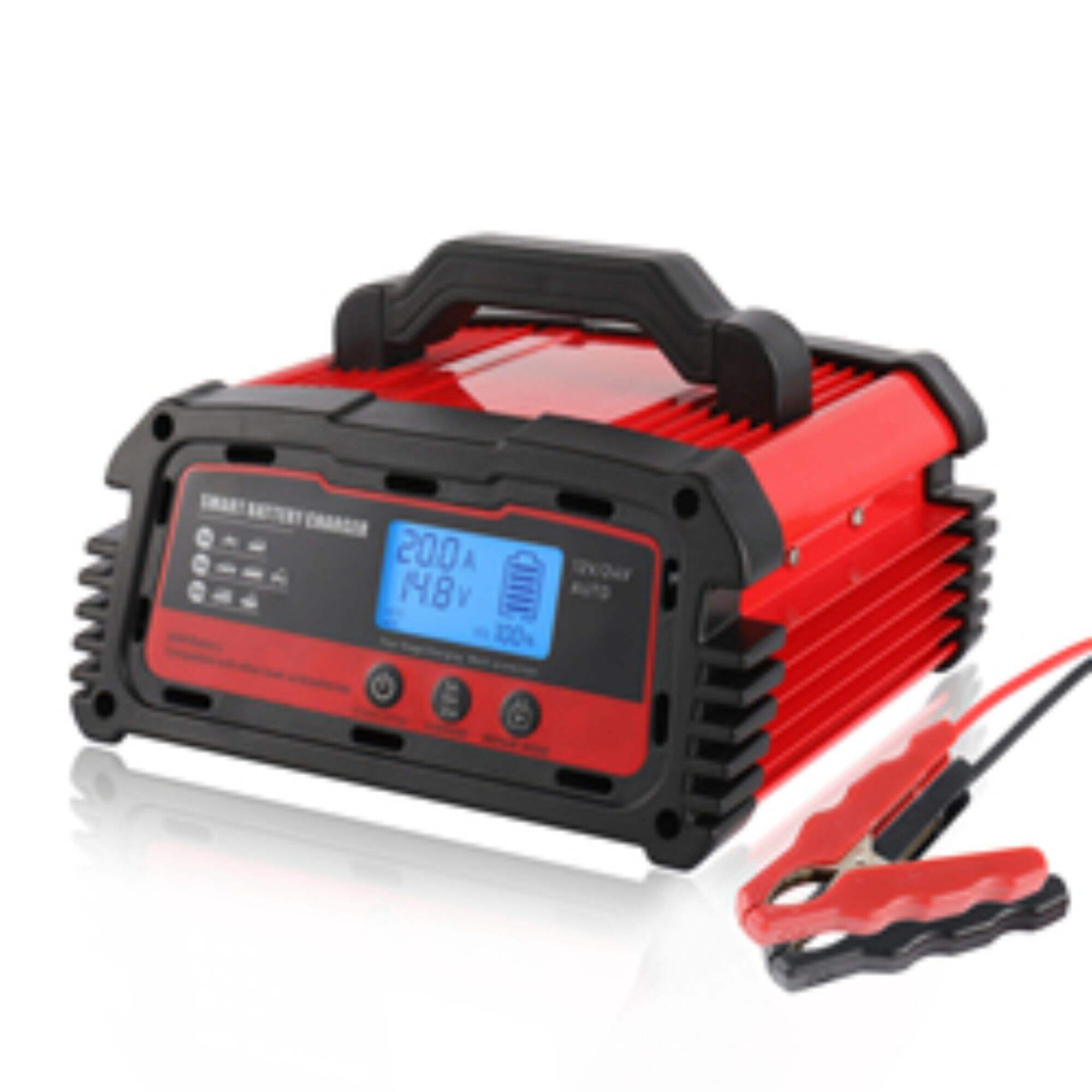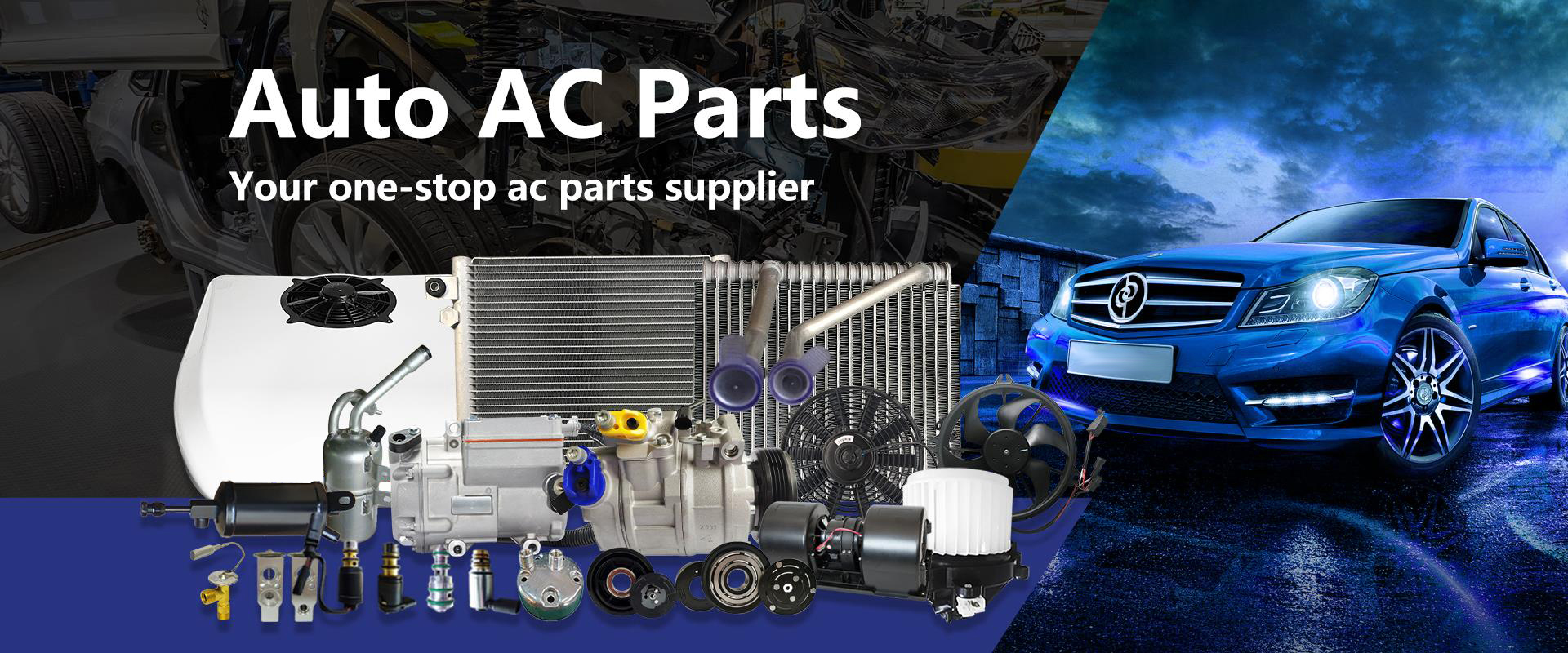Choosing the Right Portable Battery Charger for Cars and Motorcycles
Key Features of Top-Rated Portable Battery Chargers
Voltage Range: 12V/24V Dual Compatibility
Battery chargers that work with both 12V and 24V systems provide flexible power options for all sorts of equipment and vehicles around the house. People can use them on regular cars, motorcycles, big trucks, and even smaller devices that run on 12 volts. The dual voltage feature makes life easier for folks who own different kinds of vehicles. No longer do they have to keep track of several chargers sitting around the garage collecting dust. Recent market research shows something interesting too: more than 6 out of 10 shoppers actually look for this dual voltage option when buying a charger because it covers so many situations and saves money in the long run. Makes sense really, since nobody wants to buy another charger just for their boat or RV.
Smart Pulse Repair Technology Explained
Portable battery chargers equipped with Smart Pulse Repair tech aim to bring old batteries back to life by tackling sulfation issues. The system sends carefully timed electrical pulses through the battery cells, breaking apart those stubborn sulfate crystal formations that build up over time. This process actually makes the battery better at holding onto its charge again. Real world results show these devices can add several extra years to a battery's useful life while making them work more efficiently. Some batteries even regain close to their original capacity after treatment. Research from various battery science publications supports what many users have experienced firsthand - when properly applied, this pulse technology really does make a difference for both performance and environmental impact in the long run.
Compact Design & Portability Factors
When it comes to portable battery chargers, having something that doesn't take up much space matters a lot for people who need to move around with them. Most newer models weigh next to nothing these days, so they work great when someone's on the go whether heading out for a weekend trip or just doing some hiking. People tend to gravitate toward chargers they can slip into a backpack or pocket without thinking about it, and this portability factor actually plays a big role in what folks end up buying. Take a look at some of the best selling compact options on the market right now, and read through customer feedback online. Many users specifically mention how handy it is not having to deal with bulky devices all the time, especially when trying to keep everything organized during daily commutes or weekend adventures.
Multi-Stage Charging for Battery Longevity
The multi stage charging process works pretty well for managing how batteries get charged through those three main stages: bulk charging first, then absorption, followed by maintenance. What makes it work so good is that it stops batteries from getting overcharged while still filling them up properly. Most people find their batteries last much longer when using this method. Battery tech folks keep talking about how important proper charging cycles are for keeping batteries healthy over time. Studies looking at battery systems have found that going through these multiple stages actually makes batteries last longer than just charging straight through. Plus, the whole system becomes more efficient in the long run, which helps cut down on wasted energy and supports greener power solutions overall.
Portable Smart 12V/24V 20A Battery Charger In-Depth
Technical Specifications & Performance Metrics
The Portable Smart 12V/24V 20A Battery Charger comes packed with solid specs that deliver great performance and efficiency when put to work. What makes this charger so handy? Well, it can handle both 12V and 24V outputs, which opens up all sorts of possibilities from charging motorcycle batteries to car systems and pretty much anything else that runs on standard 12V power. The 20A rating really speeds things up too, cutting down on waiting around while batteries charge back up. People who've used it report noticeably faster charging times than many competing models out there. Tests show it manages power exceptionally well without wasting much energy along the way. And here's something interesting: despite all these bells and whistles, the device maintains steady power output whether dealing with lead acid, AGM, or gel cell batteries. For folks looking for dependable charging solutions without compromising on speed or quality, this one definitely stands out from the crowd.
Motorcycle vs. Car Battery Charging Scenarios
Looking at how battery chargers work for different vehicles shows some pretty big differences when it comes to battery size and chemistry. Motorcycle batteries tend to be much smaller than car batteries, so they need less power to charge up properly. Car batteries on the other hand are bigger and more complicated, meaning they usually require stronger chargers because of their increased capacity. The way we charge them also varies depending on what kind of battery chemistry is inside each vehicle. For example, most car batteries need special maintenance mode settings that aren't really necessary for motorcycle batteries. Winter brings extra challenges too - cold weather can drain batteries faster, so many riders find themselves adjusting charger settings just to keep their bikes running through harsh winters. People who have both cars and motorcycles often talk about how handy it is to have a single charger that works well with multiple battery types. This flexibility becomes really important for families with mixed transportation needs, saving money while making sure all vehicles stay reliably charged no matter what season it is.
Deep Cycle Battery Support & Pulse Repair Benefits
Deep cycle batteries work differently than regular car batteries. While standard vehicle batteries give quick power surges to start engines, deep cycles deliver steady power over time. That's why folks who own RVs or boats rely on them so much. These vehicles need constant electricity for lights, appliances, navigation systems everything basically. Charging equipment needs to be able to handle deep cycle batteries properly if they're going to last. Smart Pulse Repair tech makes all the difference here. It fights off sulfation buildup which tends to kill battery performance over time. People who use this technology report real benefits. Their batteries last longer and stay reliable even when pushed hard during long trips or harsh weather conditions. Many campers and boaters swear by it after seeing their investment pay off through fewer replacements and better overall performance.
User Experiences & Reliability Assessment
What people actually say about portable smart battery chargers tells us a lot about how reliable they really are. Looking at all the feedback across different websites shows common themes emerge time and again. Most folks talk about how long these chargers last before breaking down, and plenty mention getting steady power output even after months of regular use. Many reviewers point out just how easy they are to operate, especially when dealing with tricky situations like extreme temperatures or outdoor settings. The numbers don't lie either consumer ratings consistently back up stories of solid performance day after day. People who care most about having something they can count on tend to gravitate toward these models because they just keep working without surprises. And let's face it, anyone needing to charge multiple devices regularly wants peace of mind knowing their gear won't fail them when it matters most.
Compatibility with 12V Accessories & Appliances
Powering Portable Car Fridges & Refrigerators
For anyone who loves camping or spends time on the road, portable battery chargers are basically essential when it comes to keeping those 12V car refrigerators going strong. Without them, campers would struggle to keep food fresh or drinks cold while out in remote areas where there's no access to regular electricity. The good news is that these little power packs work wonders for maintaining proper temperatures inside the fridge compartment. They help preserve things like meat and dairy products, keep beer at drinkable temps, and even store medications safely without risking spoilage. Brands like Dometic CFX3 and Alpicool have designed their car fridges specifically to work well with portable chargers, which means better power management and less drain on vehicle batteries. Campers report that having this setup makes all the difference during extended trips. No more stopping every few hours to recharge batteries, so people can enjoy their adventures without worrying about losing power mid-journey.
Integration with 12V Car Electronics Systems
Getting battery chargers to work well with 12V car electronics matters a lot because it keeps everything running smoothly and makes all those gadgets actually useful. We're talking about things like stereos, GPS units, and all sorts of other stuff in modern cars that need steady electricity to function properly. When chargers integrate properly with these systems, they don't mess up how the devices perform while also helping extend the life of the car battery itself. Some research points to better energy management when systems are properly matched, so people can use their navigation without worrying about losing power halfway through a trip. Take for instance drivers who report longer lasting batteries after switching to compatible charging solutions. Their radios stay on longer, GPS works consistently, and none of that annoying cutoff mid-song situation happens anymore. For folks who spend hours in their cars, whether commuting daily or taking cross country adventures, this kind of compatibility isn't just nice to have it's practically necessary these days.
Using Chargers for Camping & RV Applications
Battery packs have become must-haves for anyone heading into the wilderness or setting up camp in an RV. They keep everything running while away from outlets, from keeping drinks cold in those little fridge units to powering lights at night and even charging phones so people don't get lost without GPS. Before packing for a trip, most campers spend time figuring out how long it takes to charge their pack and whether it can handle all the gadgets they plan to bring along. Many folks who've been camping regularly swear by good quality chargers after experiencing what happens when one fails mid-trip. One hiker mentioned how his group was stuck without power during a storm because their cheap charger died, forcing them to ration food and light usage until they could find help. These portable power solutions mean campers aren't tied down to campsites near electrical hookups anymore, giving them access to more remote spots that would otherwise be impossible to enjoy comfortably.
Seasonal Use Cases (e.g., Winter Storage)
Portable battery chargers really help keep batteries healthy during those long storage periods, especially come winter time. A lot of cars sit unused for weeks or even months at this time of year, which can cause serious problems for the battery if nobody checks on it. Using a good quality portable charger helps keep the battery topped up and stops things like sulphation from happening. Most folks should charge their batteries every couple weeks and check the voltage levels just to be safe. People who work with car batteries all day say that keeping up with these simple maintenance steps makes a huge difference in how long the battery lasts before needing replacement. When spring rolls around and the vehicle gets back on the road, there's no frustrating wait while the battery slowly comes back to life. These tips matter most for classic cars, RVs, and other gear that sits idle but needs reliable power regardless of what the thermometer says outside.
Safety & Efficiency Best Practices
Overcharge Protection Mechanisms
Overcharge protection stands out as one of the most important features found in good quality battery chargers because it stops possible damage while helping batteries last longer. Basically, what this does is stop charging once the battery reaches full capacity, which keeps things from getting too hot and wearing down prematurely. Nearly all newer charger models come equipped with multiple safety features now days, things like controlling voltage levels and knowing when to stop charging altogether. These protections aren't just nice to have either; industry guidelines like those set forth in Battery Charging Specifications (BCS) actually require them for safety reasons. Research published in the Journal of Power Sources backs this up showing that gadgets with proper overcharge safeguards can cut battery degradation rates by around 25%. That means better performance over time and fewer headaches for users concerned about battery reliability.
Temperature Monitoring & Auto-Shutoff
Keeping track of temperature is really important for good charging practices and stopping batteries from getting too hot. When systems constantly check what's going on with temperature levels, they know when to slow down charging speed or just stop altogether if things start looking bad. There's also this handy auto shut off thing that kicks in when batteries hit maximum charge level, which stops them from continuing to charge and possibly overheating. Battery University did some research showing that around 30 percent of problems related to charging get avoided thanks to these kinds of features. That shows just how much difference proper temperature management makes for both keeping batteries safe and making sure they work efficiently over time.
Maintaining Charge Cycles for Optimal Health
Battery longevity depends heavily on proper charge cycle management. The smart approach involves steering clear of letting batteries drain completely since that puts unnecessary strain on them. Some situations call for deep cycling though, especially with older technologies like lead acid batteries. Deep cycling basically means draining the battery all the way down before giving it a full recharge, something that actually helps revive these particular battery types. Lithium ion batteries work differently however. They tend to last longer when used regularly with partial charges rather than going through those deep discharge cycles. According to folks who study battery tech, keeping a low level trickle charge going works wonders for maintaining battery health without risking damage from overcharging, making it possible for batteries to stay functional much longer than they otherwise would.
Storage Tips for Prolonged Lifespan
Getting storage right makes all the difference when it comes to how long batteries last. Most folks should store theirs somewhere cool and dry, away from direct sunlight. The sweet spot for charge seems to be between about 40% and 60% if they're going to sit unused for months at a time. Leaving them completely drained or fully charged for extended periods puts unnecessary strain on the cells inside. A report from the International Battery Council actually found that proper storage practices can double battery life in some cases. Following these simple guidelines means less frequent replacements and better value over time. Just remember to check stored batteries occasionally and top up the charge every few months to keep them performing well when needed.



